 | 6. SPACING |
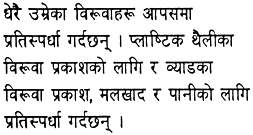 | Seedlings which are growing too closely together compete with each other. When in polypots they compete for light, and in beds they compete for, nutrients and moisture as well. |
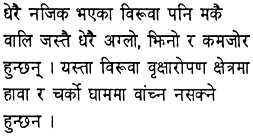 | Just like in a field of maize, seedlings that are too close together will grow to be thin and weak. When seedlings like this are planted out they will be damaged by the wind and by hot sun. |
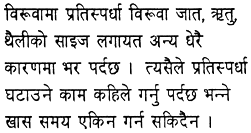 | How soon competition starts between seedlings depends on the species grown, the time of year, the size of the pot they are growing in and many other factors. There is no fixed time at which you should deal with it. |
 | When competition is first noticed - when the leaves of some seedlings are growing over smaller ones next to them - the seedlings should be respaced. |
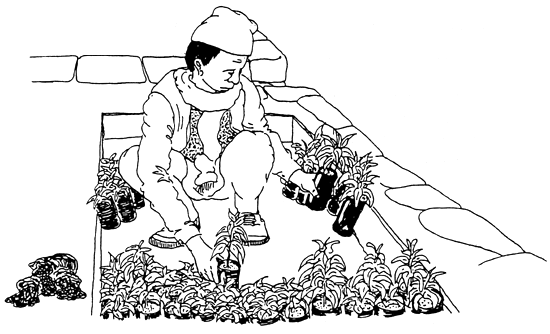
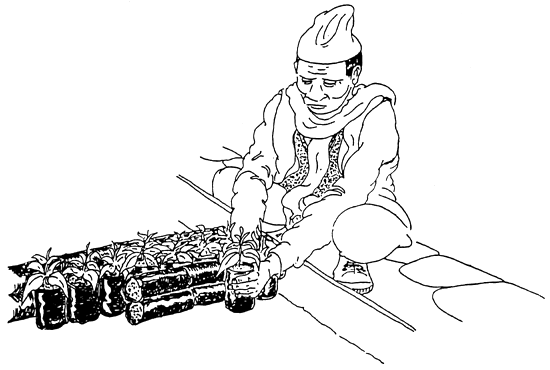
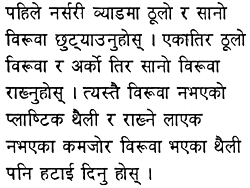 | First work through the bed, sorting out seedlings. Put large seedlings to one side and small to another. Remove any empty polypots and any very poor seedlings that are not worth keeping. |
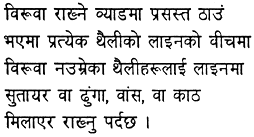 | Place the seedlings in single rows separated by a line of the empty polypots lain on their sides, or by a line of stones, wooden slats or bamboo. |
 | If there isn't much room separate pairs of rows in the same way. |
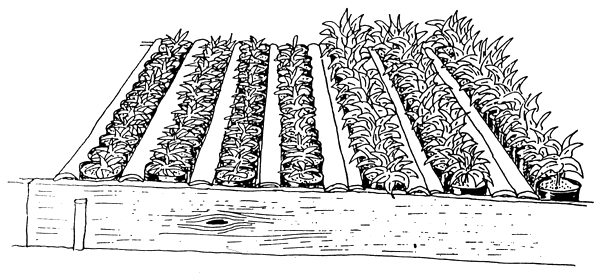
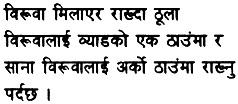 | Make sure that the larger seedlings are placed together in one part of the bed and smaller ones together in another part: |
 | The larger seedlings may need more space so two lines of separating polypots or sticks can be used. |
| Leaves should not overlap with seedlings in the next row. | |
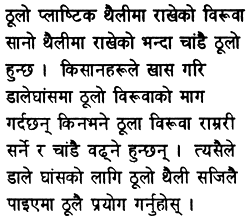 | If seedlings are grown in larger polypots they grow to be bigger, more quickly than those in small pots. Farmers often ask for larger seedlings, especially of fodder trees, to plant on their own land because they survive better and grow more quickly. So, if larger 100 × 175 mm (4 × 7 inch) polypots are available, use them. |
| Polypots of black polythene last longer and do not rot in the sun. |